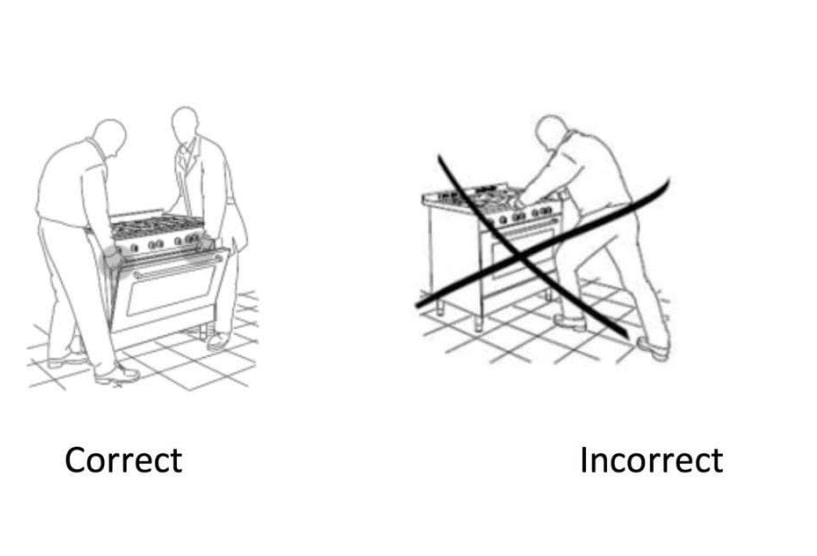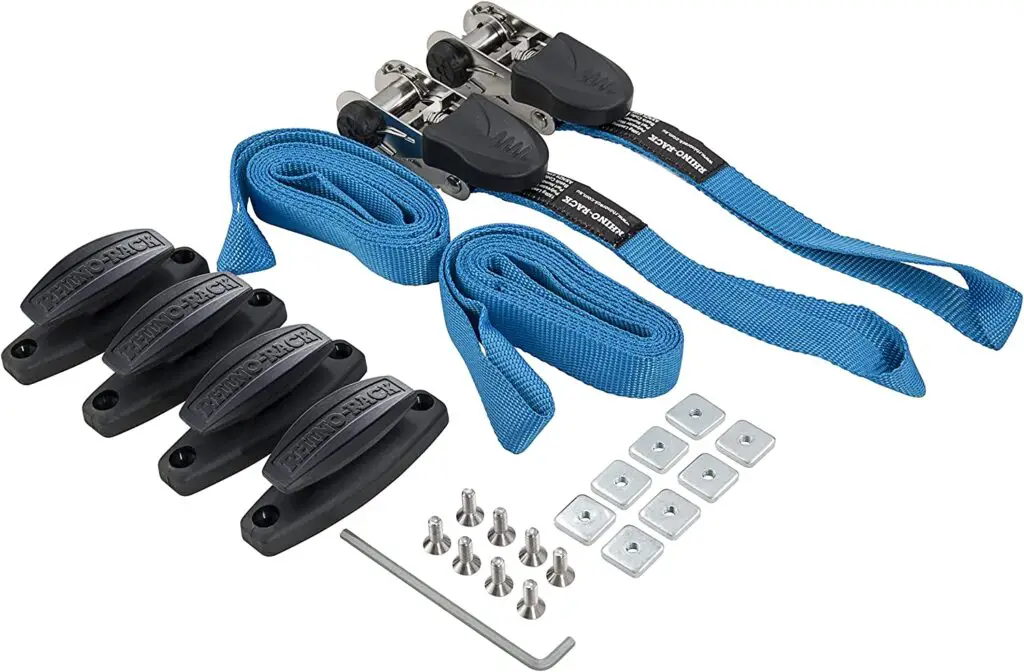
 Save Upto $850 ›
Save Upto $850 ›Are you trying to move from one apartment to another or trying to relocate your gas stove? But how to do that? Wondering if you can move your stove on its back?
Don’t worry in this detailed article we have tried to answer this question in the best possible way. No one likes to make a huge move just to find out they’ve caused a big problem when they get there; there are several little considerations when moving a modest stove.
Initially, the short answer to this question can be given as:
To help you understand more easily we have tried to visualize do’s & don’ts as below:

Below in this article we have provided in detailed reasons and logics why you shouldn’t try to move your gas stove on its back. If you are interested into helpful insights then keep reading to find out more!
Well, as stated above, there is not a general thumb rule that you should never transport a stove on its back but it is the best approach. There are some key elements that can help you to analyze whether you can move your stove on its back.
Your gas stove maker will almost definitely supply you with instructions on how to carry it safely. Regardless of how old your gas stove is, you should keep in mind that neglecting what your manufacturer suggests may result in a void warranty.
If you don’t have the handbook, you can look it up online.
If you still can’t find the manual online or the manual has not been described if you can move your stove on its back or not then you can always call the manufacturer and ask them the subject question by telling your stove’s model type and number.
If you can find out whether you can move your particular stove on its back or not then it is the best idea to move it to its sides.
Big companies like General Electric Appliances advise their customers:
“When moving a range or wall oven, it can be placed on either side during transporting without doing any harm to the appliance. ‘Sides’ refers to the left or the right, not the rear”.
Now, this can be taken as a Golden rule. However, still, this is also not the best approach and as stated above has its own potential problems. Therefore, the considerations to minimize these problems should also be taken simultaneously.
Professionals or Plumbers often abstain people from transporting a stove on its back. Many of the gas lines linking to valves are installed on the back of the gas stove. Hence laying it on its back while transporting can damage these valves severely.
Consequently, if they get destroyed, the cost to repair them will get much higher than the cost to transport and you will regret moving them. But this is not the worst-case scenario. In the worst case, the unit of a stove may become utterly worthless which will result in buying a new one.
There are also some unseen hazards that can occur. This means that there could be some damage that could happen to your stove and cannot be observed at that time but will expose at the time of connecting the stove to the gas line which can be fatal.
No. You should avoid laying a stove on its front. Similar to laying on the back; laying a stove on its front is also extremely troublesome:
You can only transport a stove on its side when this is the only choice for you. It is not the best approach but better than laying the stove on its.
Gas stoves are ideal for side transport because they include little to no machinery. However, there are some risks and cautions in this regard that should also be discussed here
Transporting your gas stove on its side is not without risk, even though it is the suggested method.
The most serious danger would be scratching the panels. This is easily remedied by placing a blanket, towel, or rubber pad beneath the stove.
If you are not careful with what you place the stove on, the panels can be dented or bent. Make certain that it is laid flat and that the surface on which it is laid is even. The bed of a pickup truck is frequently grooved or ridged. This should not be too difficult, but the blanket or towel will surely come in handy.
In this regard we’d recommend you use a moving blanket which can save your floor from getting scratched:

Now that if you are trying to save some cash and trying to move your stove by yourself then it is highly recommended not to do this. However, if you still want to give it a go and transport the stove on its back then the least you can do is follow the instructions stated below:
It is still necessary to exercise extreme caution while moving a stove on its side. To avoid harming the painted finish of your stove, use a padded moving blanket. While a little scrape may not be seen when placed beside your home’s cabinets, it will almost certainly leave exposed metal that will rust over time.
If you prefer to lay a gas or electric stove on its back, wrap any wires or hoses tightly and use a padded surface. This will keep you from damaging the necessary connections or the rear of your stove.
Here is the best wire strap you can find on Amazon:

A stove may typically weigh between 100 and 250 pounds. Moving a major appliance like a washer, dryer, or stove is always a two-person operation, whether you’re carrying it or using a dolly. Even better, having a third person on hand to assist is always preferable.
However, if you are a one person or a couple then moving the stove by yourself can be tiresome because shifting a stove for many couples is a new task, and how to do it. You’ll need something under the appliance’s legs to keep it from digging into the floor, especially on those soft vinyl floors. The easiest solution is large sheets of corrugated cardboard, which you can slide under the appliance by tipping it back. Plain cardboard, such as that used in cereal boxes, is insufficiently heavy.
You can use a product that can help you to move a stove without heavy lifting:

Or if not this then you can also use:

Well, if it is too much expensive for you then there are some tips that can be helpful for you (but not helpful as the above-mentioned products):
you can also use cardboard to move the stove and other heavy appliances. The cardboard can guard the floor and slide easily. Place a large piece of cardboard under the stove after tipping it up. If it uses gas, slide it out far enough to get to the gas valve.
You can use a combination of sliding it and pivoting and rocking it on its 4 corners, so with yourself at 1 corner tilt the appliance towards you, hold that and lean it towards you until you can pivot it and exchange the weight from the corner you have to the next corner, using the same technique hold the new corner that’s on the floor and pivot trying to get it an extra inch moved in any direction, now you’re going to ‘walk’ the appliance by shifting it from corner to corner and trying to move it an inch or so every time you rock it .you’ll soon see how to walk it. Weight moves from the front left corner to the front right, front right to back right.
Whether you have transported the stove on its sides; in a minivan or with the help of a shifting company it is always the best idea to check the stove after getting it transported from one location to another. Hence, there are certain elements that should be inspected instantly after getting the stove transported:
When you arrive at your destination, even if you did not transport the gas stove on its back. It is always worth being doubly sure everything is in working order for an appliance like a gas stove.
In case you are moving a new stove make sure the stove is being shifted by the company itself. Because many times, the Company shall not be responsible for transportation or other costs other than those incurred within the provisions
There are some additional considerations with regard to moving your gas stove:
For further guidance you can check out this video:
Since a stove requires a substantial investment, you should take precautions to safeguard it when transferring it. The safest technique to move a stove from one location to another without harming it is to move it on its side. Calling a shifting company for moving it from one apartment to another is necessary as per our recommendations. You should exercise caution and pay attention to the advice in this article.
No matter how careful you are, factors like poor driving and terrible roads could still contribute to a few shattered pieces.
However, if some pieces break off in transit and your stove malfunctions when you reassemble it at your new location, do not be alarmed. If a cooktop component breaks, the worst that might happen is that you might have to skip a few days of cooking your favorite meals! Fortunately, you can solve several common cooktop issues on your own.